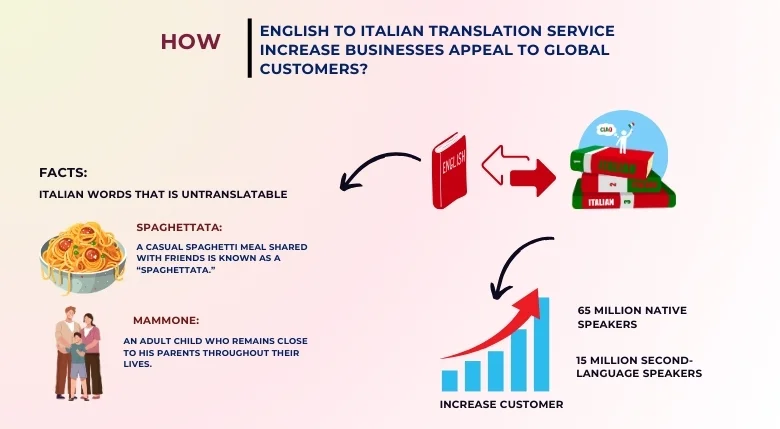
About 66,000,000 people speak Italian, a romantic language, with the majority of them residing in Italy. It is the official language of three nations: Italy, San Marino, and Vatican City.
Did you know that Latin is the ancestor of not only French, Spanish, Portuguese, Romanian, Ladin, and Catalan but also Italian? But not from the “classical Latin” Cicero or Julius Caesar used, but from Middle Ages “Vulgar Latin,” as it is known to linguists.
Exciting Facts about the Italian Language
☛ There are 65 million native speakers, 15 million second-language speakers, and approximately 5 million foreigners who are fluent in Italian.
☛ The letters j, k, w, x, and y do not exist in the Italian language. Foreign words with these letters, on the other hand, retain their original spelling.
☛ Few can compete with the Italians in music, art, and cuisine! This explains why so many Italian loanwords from these three domains have found their way into other languages.
☛ Italian won the title of language with the sexiest accent in a CNN-sponsored Facebook poll in 2014. Italian is often referred to as the “language of love” because of the number of words that end in vowels, the melodic nature of the language, and the absence of consonant clusters, all of which contribute to its sensibility.
Also Read: Everything About Data Annotation, 2023 Market And Trends In Global World!
A few Words Italian Language that is untranslatable
☛ Culaccino: An enigmatic term for the wet ring a glass leaves on a surface.
☛ Mammone: An adult child who remains close to his parents throughout their lives.
☛ Menefreghism: A sort of “couldn’t-care-less attitude.
☛ Meriggiare: A term used in literature and means “to nap in the shade.
☛ Spaghettata: A casual spaghetti meal shared with friends is known as a “spaghettata.”
☛ Prego: A polite word that can be used to say a number of things, like “you’re welcome” or “I’ll give someone else in line my turn.”
How Does English To Italian Translation Help Businesses Expand?
The majority of regular English people don’t speak Italian well. Making sure that the intended message is accurately translated increases accessibility for all native Italian speakers, which can only serve to ensure that business objectives are met.
Growing your business into Italian-speaking areas is a great way to reach a wider audience. However, customers rarely contact companies whose content is not available in their language. Language-friendly content is important to retaining your target market’s business because of this. And employing translation services is the ideal way to accomplish this.
The English-to-Italian Translation Services in Noida also aids businesses more than anything else in developing their brand image when they have a large customer base or clientele in the sector. Every business owner wants to see their organization expand and take the lead in the industry. In order to achieve this, you must forge a solid relationship with your target market.
The original message is conveyed to an audience of Italian speakers through translation. The importance of translation can be seen in a variety of contexts, such as in contract documents, website content, marketing materials, and so forth.
Let Your Business Flourish with English-to-Italian Translation!
Professional translators will assist you in ensuring that all of your documents are translated accurately from English to Italian. When working with multinational corporations, it is crucial to have the support of a language service provider.
You can get precise translations if you work with a Reputable Translation Company like Somya Translators, which has a thorough understanding of your sector. Somya Translators is here to thrive and support businesses of any size with top-notch language solutions.







